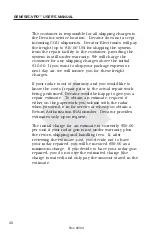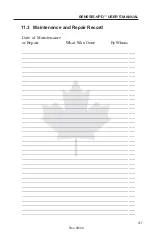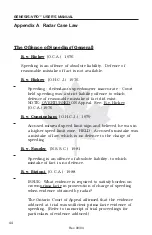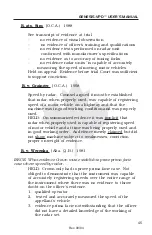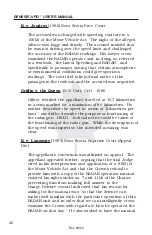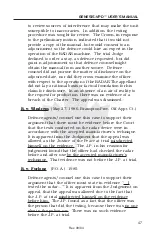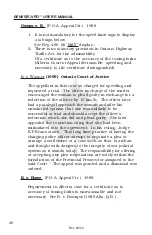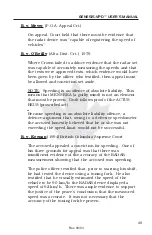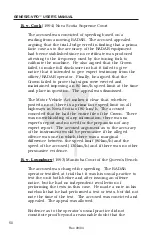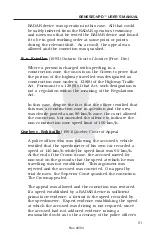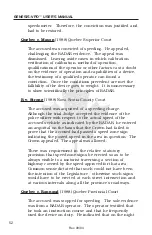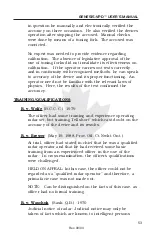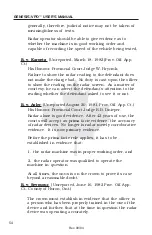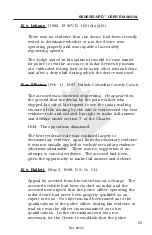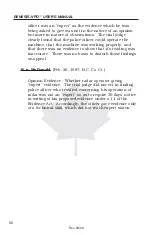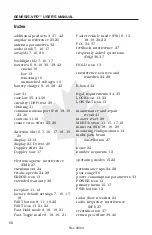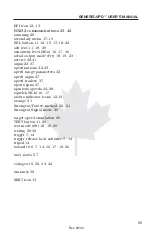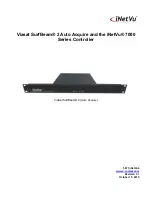
GENESIS-VPD™ USER’S MANUAL
54
Rev. 09/04
generally, therefore, judicial notice may not be taken of
meaningfulness of tests.
Radar operator should be able to give evidence as to
whether the machine is in good working order and
capable of recording the speed of the vehicle being tested.
R. v. Karpetz
(Unreported, March 18, 1982 (Prov. Off. App.
Ct.)
His Honour, Provincial Court Judge W. Hryciuk.
Failure to show the radar reading to the defendant does
not make the charge bad. No duty is cast upon the officer
to show the reading on the radar screen. As a matter of
courtesy, he can advert the defendant’s attention to the
reading whether the defendant asked to see it or not.
R. v. Axler
(Unreported August 20, 1981, Prov. Off. App. Ct.)
His Honour, Provincial Court Judge R.B. Dnieper.
Radar alone is good evidence. After 42 years of use, the
courts will accept as prima facie evidence, the accuracy
of radar devices. No longer is radar merely corroborative
evidence. It is now primary evidence.
Before the prima facie rule applies, it has to be
established in evidence that:
1. the radar machine was in proper working order, and
2. the radar operator was qualified to operate the
machine in question.
At all times, the onus is on the crown to prove its case
beyond a reasonable doubt.
R. v. Seymour
(Unreported, June 16, 1982 Prov. Off. App.
Ct., County of Huron, Ont.)
The crown must establish in evidence that the officer is
a person who has been properly trained in the use of the
device and further, that at the time in question the radar
device was operating accurately.

